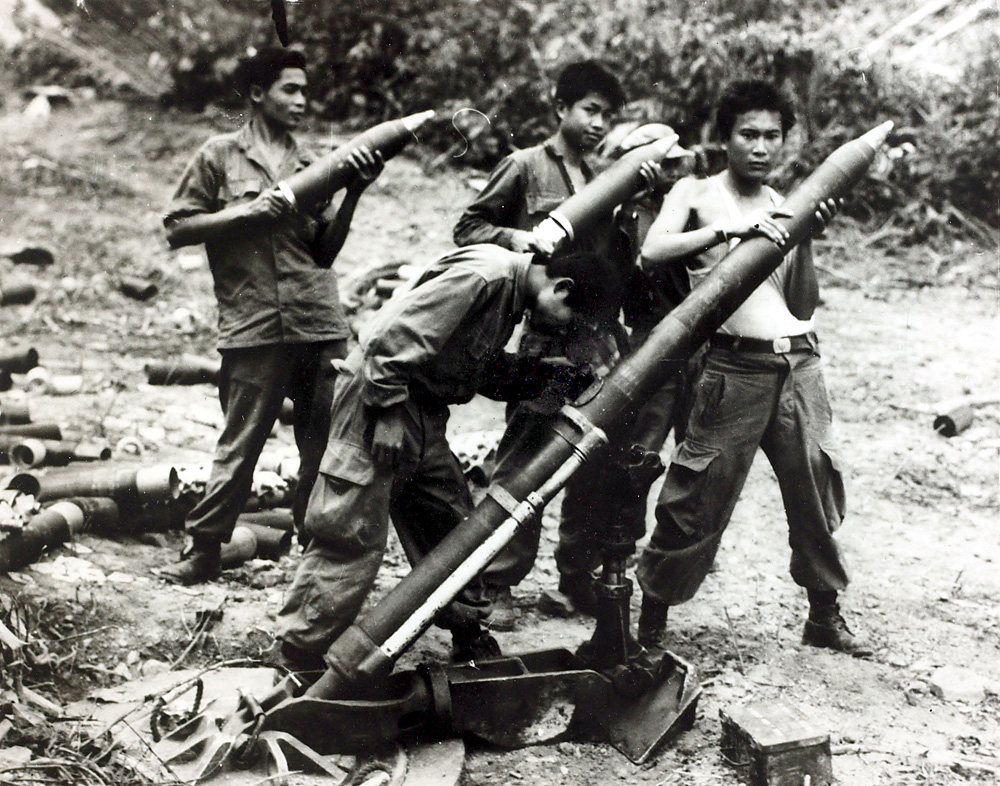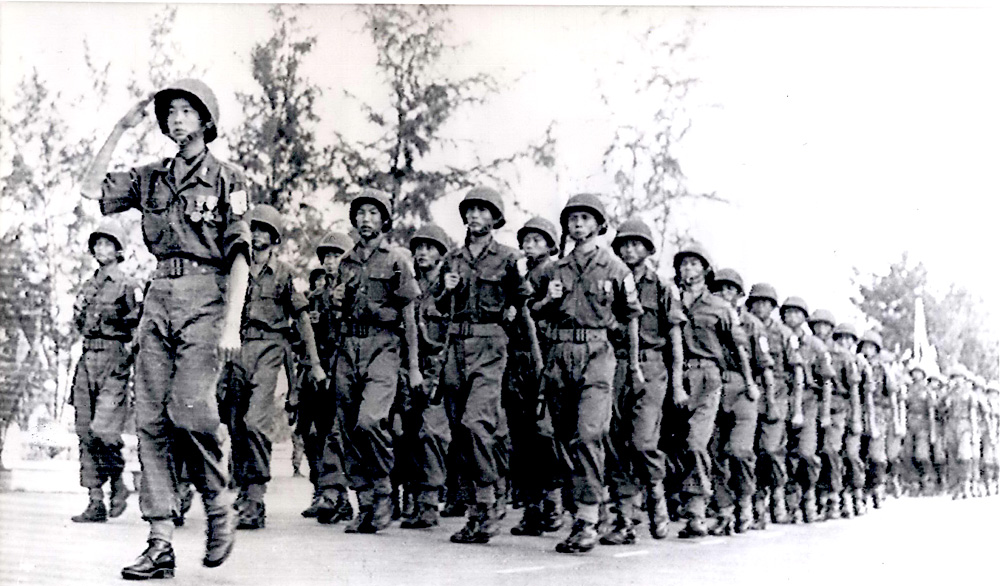
Laotian soldiers near Vietnam in the 1960s.
Getty ImagesAs Russia and the Association of Southeast Asian Nations (ASEAN) celebrate the 20th anniversary of establishing a dialogue partnership, the influential Asian grouping is under the presidency of one of Moscow’s oldest allies in the region, Laos.
The small landlocked country that is surrounded by Cambodia, Thailand and Vietnam was one of the most hotly contested theatres of the Cold War, around the time of the Vietnam War.
“In the late sixties and early seventies more bombs fell on the territory of Laos than on the whole of Europe in World War II,” eminent Russian journalist Evgeny Belenkiy wrote in an article for RT. “However, in spite of the fact that between 1968 and 1974 the little capital city of Laos, Vientiane, was swarming with journalists reporting on the war, the true scale of the conflict at ‘the other theatre’ was revealed to the world only years later.”
The U.S. and the Soviet Union backed some of the opposing sides in a bloody civil war in Laos. The war for control of the country was fought between communists, royalists, right-wingers and so-called neutralists. At certain points in the Civil War that lasted from 1953 till 1975, the combatants included troops and proxies from North Vietnam, Thailand, South Vietnam and the United States, which used the CIA Special Activities Division. Even Taiwan and the Philippines extended support to some factions.
“Both America and Russia invested a lot of money and resources in the battle for Laos from the late 1950s,” says Alexei Dudnik, a Moscow-based historian. “The CIA called it the ‘Secret War,’ and it was out of the gaze of the media, which first focused on the Cuban Missile Crisis and then on the Vietnam War.”
Moscow heavily armed the North Vietnamese Army, which helped give the communists the upper hand, while Washington used Air America, a passenger and cargo airline, which was a dummy corporation by the CIA, to help an army of Hmong tribesmen.
“When in 1969-1970 the conflict escalated beyond anything previously seen in Laos, the media hardly noticed,” Belenkiy wrote. “In fact, by that time thousands of Vietnamese volunteers were fighting on the side of the Lao Communists. Meanwhile, thousands of Thai soldiers dismissed from the Royal Thai Army and Air Force (their personal records removed from all files) were fighting alongside a whole army of tribal Hmong on the CIA’s payroll against the Patet Lao (Lao Communists).”
 South Vietnam paratroopers march in parade Oct. 26. 1960. Source: Legion-Media
South Vietnam paratroopers march in parade Oct. 26. 1960. Source: Legion-Media
Foreign armies stayed in the country even after the 1973 Paris Peace Accords, under which France, the U.S., USSR and both Vietnams agreed to not maintain any troops in Laos.
In 1975, a few months after North Vietnam captured Saigon, the tide turned definitely in favor of the Lao Communists. On December 2, 1975, the last king of Laos, Savang Vatthana abdicated and the Lao People’s Democratic Republic was established. The republic cut off ties with all its neighbors except Vietnam and formally established strong ties with the Soviet Union.
Around 70,000 people died as a result of the civil war, which also led to almost 400,000 internally displaced people.
The U.S. dropped unexploded ordnance (UXO) from 1964 to 1973. This has led to the death of close to 13,000 people since 1973, according to Lao government figures.
It was only in 1997 that the U.S. government admitted its involvement in the war.
From 1975 till the fall of the Soviet Union, the only foreigners who had easy access to Laos were Soviet citizens. Close to 5,000 Soviet citizens lived in the country in the 1980s. The population mainly comprised of military advisors, technical specialists, diplomats and their family members.
“The USSR completely helped rebuild the country,” says Dudnik. “Along with grants and loans, all the modern infrastructure in Laos was built by the Russians.”
He adds that close to 7,000 Laotians were trained in Russian schools and technical institutes.
The country of 6.8 million is still officially communist, but, like neighboring Vietnam, has been slowly opening up its economy to outside investment.
“Of course, the younger generation doesn’t speak much Russian, but life is changing at a very slow pace in Laos,” says Leonid Chikov, a retired engineer, who helped set up a truck-rebuilding plant in southern Laos. He returned to the country after 25 years and said he still felt the same warmth from officials and common citizens alike.
All rights reserved by Rossiyskaya Gazeta.
Subscribe
to our newsletter!
Get the week's best stories straight to your inbox